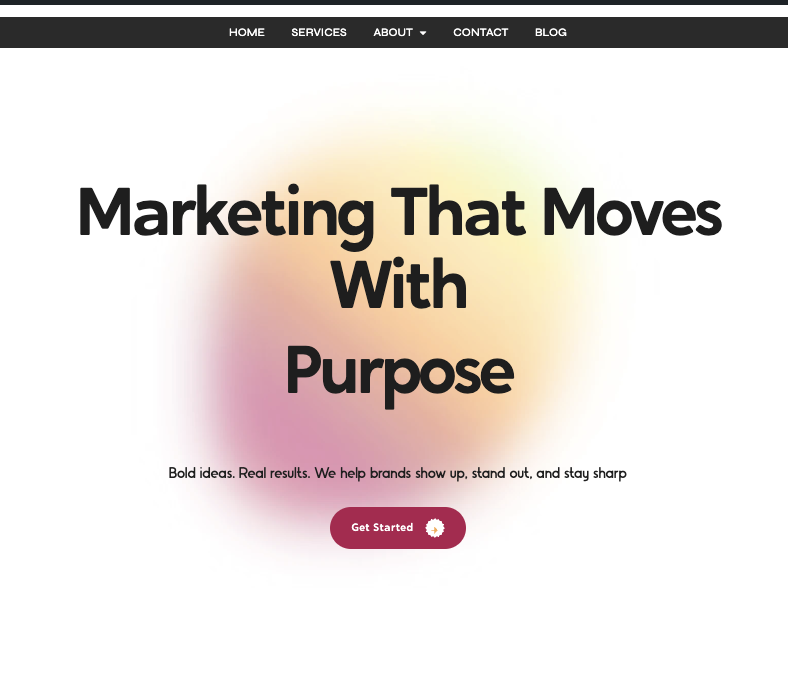Marketing dollars disappear quietly. Ads run, dashboards fill with numbers, but the real impact often stays murky. A campaign might generate thousands of clicks, yet if only a handful turn into customers, that spend is nothing more than a leak.
In the first post of this series, we showed why audits matter and how skipping them leaves problems hidden until they become costly. Now we turn to what a marketing audit must actually cover to make sure effort and spend aren’t wasted.
Too many reviews stop at surface counts like impressions or likes. A proper audit goes deeper. It shows where messages confuse buyers, where budgets flow to the wrong channels, where prospects slip away in the journey, and where reports fail to connect to revenue.
This post breaks those into four pillars: messaging, channels, customer journey, and analytics. Together, they give leaders a framework to measure what drives growth—and expose what quietly holds it back.
What a Marketing Audit Really Is (and isn’t)
Definition and Purpose
A marketing audit is a full review of how you attract and keep customers. It isn’t about prettier dashboards or thicker slide decks. It tests whether your marketing efforts actually move the business forward—through sales, revenue, and retention.
The difference is simple:
- Reports show what happened last month.
- Audits ask why it happened, whether it helped the business, and what must change.
Reports summarize activity. Audits reveal cause and effect.
Why Surface-Level Reviews Fail
Many teams mistake reports for audits. They highlight vanity metrics—impressions, followers, clicks—that look encouraging but can mask waste. A campaign can show rising engagement while quietly draining cash if those interactions never convert.
That’s the problem with surface reviews: they tell you people saw your message, but not whether anyone bought, renewed, or recommended you. Without that deeper view, leaders make decisions based on half-truths.
Surface Metrics vs. Real Metrics
- Surface: followers, impressions, pageviews, likes
- Real: conversion rate, cost per acquisition, customer lifetime value, revenue growth
An audit forces the shift. It pushes teams to look beyond easy wins on paper and confront whether marketing is truly delivering.
The Four Core Pillars
Every useful audit digs into four areas:
- Messaging and Brand Positioning — is your story clear, consistent, and distinct?
- Channels and Tactics — how is your budget divided across ads, search, email, social, and other outlets?
- Customer Journey Mapping — where do prospects drop off, and where does hand-off ownership break down?
- Analytics and Tracking — are the numbers accurate, and do they tie to revenue?
These pillars connect activity to outcomes. Without them, an audit is just a snapshot of clicks and impressions.
Pillar 1 — Messaging & Brand Positioning
Why Messaging Matters
Strong marketing begins with clear, consistent messaging. If prospects don’t understand who you are or why you matter, no channel or campaign can fix it. Messaging shapes first impressions, sets expectations, and signals credibility.
Confusion is expensive. When value propositions are vague or inconsistent, buyers hesitate. They leave websites, ignore emails, or choose competitors who explain their offer more clearly. On the other hand, sharp messaging amplifies every other tactic. Paid ads convert more efficiently. Sales calls flow more smoothly. Campaigns reinforce each other instead of pulling in different directions.
How to Audit Messaging
A messaging audit reviews every touchpoint where your brand speaks to customers. Common areas to examine include:
- Website headlines, subheadings, and calls to action
- Sales presentations, proposals, and brochures
- Ad copy across search, social, and display
- Email subject lines and nurture sequences
- Social media bios and posts
The goal is to spot whether the same value message repeats across channels, or whether each piece sounds like it belongs to a different company.
Common Red Flags
- A homepage headline that promises one benefit while ads promote another
- Sales decks that use jargon customers wouldn’t repeat themselves
- Different tones of voice across marketing, sales, and customer success
- Value statements that could apply to any competitor in the industry
These inconsistencies weaken trust and blur recognition. If a customer can’t repeat what you stand for, they’re less likely to buy—or to remember you later.
Benchmarks & Best Practices
Research from McKinsey and Harvard Business Review shows that companies with consistent, differentiated positioning outperform peers in both customer trust and long-term revenue. Their findings highlight three common traits of strong messaging:
- Clarity — Can prospects immediately explain what you do?
- Consistency — Does every channel reinforce the same promise?
- Differentiation — Is it obvious how you stand apart from competitors?
A quick self-checklist:
- Can someone outside your industry explain your value after reading your homepage?
- Do all your channels echo the same identity and tone?
- Would customers describe you the same way your internal team does?
If any answer is no, your audit should flag messaging as a gap that needs fixing before deeper marketing improvements can take hold.
Pillar 2 — Channels & Tactics
Why Channels Are Often Mismanaged
Think of how budgets usually get set. Paid ads get the lion’s share because clicks look immediate. Social media keeps its budget because it feels busy, even if revenue impact is fuzzy. Channels that could deliver better results stay underfunded simply because they’re less familiar.
That’s how waste creeps in. Money isn’t lost in one big mistake—it leaks out through inertia. A competitor willing to reallocate boldly can pull ahead without spending more.
How to Audit Channel Performance
A strong audit doesn’t ask “How much traffic did we get?” It asks, “Did this channel create business outcomes?”
- Paid Ads — Are keywords or audiences too broad? Do conversions justify the cost?
- SEO and Content — Is organic growth driving steady traffic and leads?
- Email Campaigns — Do opens and clicks translate into pipeline?
- Social Media — Does engagement lead anywhere close to revenue?
The point isn’t traffic for traffic’s sake. Each channel must connect to outcomes like leads, opportunities, and customer lifetime value.
Surface vs. Deep Channel Metrics
Reports often highlight surface signals that look positive but hide gaps.
- Surface: clicks, impressions, engagement rates
- Deep: return on ad spend, cost per acquisition, lead quality
A channel with high engagement but poor lead quality isn’t working. Deep metrics show whether dollars spent are actually building the pipeline.
Case Snapshot
Take a SaaS company that splits most of its budget between paid search and display. Engagement looked strong. But an audit showed 40 percent of the spend went to audiences outside its buyer profile. By shifting dollars toward SEO and targeted email nurture, the company grew ROI by more than 30 percent in three months—without raising spend.
Practical Next Steps
When reviewing channel audits, the question is always the same: what do we cut, keep, or test? Three filters help:
- Cut campaigns that burn budget without touching revenue.
- Scale channels that consistently deliver quality leads.
- Test underused channels where small bets could pay off.
The goal isn’t to spread spending evenly. It’s to double down where the returns are real and stop funding what only looks good on paper.
Pillar 3 — Customer Journey Mapping
Why Mapping Matters
Every funnel leaks. The problem is that most leaders don’t know where. A slow follow-up email, a vague CTA, or a handoff that gets lost between marketing and sales can cost far more than the ad spend that generated the lead in the first place.
Without a clear map, these leaks hide in plain sight. And while teams keep pumping money into the top of the funnel, the bottom keeps spilling it out.
Funnel Benchmarks
Industry data shows how steep the drop-offs are:
- About 80% of prospects vanish at the awareness stage.
- Only 2–3% of website visitors convert into leads.
- Nearly 70% of shopping carts are abandoned before purchase.
These benchmarks are the baseline. If your numbers look worse, the audit tells you where to start fixing.
How to Audit the Journey
An audit walks through each stage:
- Awareness — Which channels bring people in, and are they the right people?
- Consideration — Do visitors find enough clarity and trust to stay engaged?
- Conversion — Do forms, checkouts, or sales calls move quickly and clearly?
- Retention — Are existing customers supported so they stay and buy again?
Ownership matters too. Marketing may run early stages, while sales or customer success own the later ones. If handoffs are unclear, leads fall through the cracks.
Common Gaps
- Slow response times — A lead left waiting hours is often a lead lost.
- Unclear handoffs — Sales assumes marketing will follow up, while marketing assumes the reverse.
- Weak nurture flows — Prospects drift away if they never hear from you again.
Responding within 5 minutes makes you 100× more likely to connect than waiting an hour.
Action Steps
A journey audit should end with fixes, not just notes. Common ones include:
- Setting funnel benchmarks for each stage.
- Assigning clear ownership so no step is orphaned.
- Plugging leaks with faster follow-up, clearer paths, and stronger nurture.
The outcome is a smoother path from first touch to long-term customer, with less wasted spend along the way.
Pillar 4 — Analytics & Tracking
The Vanity Metric Trap
Many reports spotlight numbers that look good but prove little. Impressions, followers, likes — they rise easily, yet rarely connect to sales or retention. Dashboards show movement, but leadership can’t tie it back to revenue. That’s the vanity metric trap: activity without impact.
How to Audit Metrics
An audit asks two simple questions: are you tracking the right things, and is the data accurate? That means:
- Confirming tracking codes and UTMs are working.
- Reviewing attribution so conversions get credited to the right channels.
- Checking that every KPI connects to a business outcome, not just activity.
If the answer is no, the reporting framework needs a rebuild.
Deep Metrics That Drive Growth
The metrics that matter show whether marketing is fueling the business:
- Conversion rates at each funnel stage
- Cost per acquisition (CPA)
- Customer lifetime value (CLV)
- Retention and renewal rates
These answer the questions leaders actually care about: how much revenue is marketing producing, how much does it cost, and how long do customers stay?
Surface vs. Strategic Dashboard
| Surface Metrics | Revenue Metrics |
|---|---|
| Impressions | Conversion rate |
| Followers | Cost per acquisition |
| Clicks | Return on ad spend |
| Likes & shares | Customer lifetime value |
A dashboard built on the left column reflects activity. A dashboard built on the right tells the truth.
Practical Advice
The point of an audit isn’t more data. It’s clarity. Reports should let executives glance at a dashboard and know if marketing is driving growth. If they can’t, the audit should recommend rebuilding around revenue, not noise.
Bringing the Four Pillars Together
Why Integration Matters
Each pillar tells part of the story. A brand can have sharp messaging but weak channels. Or accurate tracking, but a funnel full of leaks. Look at them in isolation, and the real issues stay hidden.
The biggest problems show up in the gaps between pillars. Unclear messaging drags down even the best channels. Bad data makes weak campaigns look stronger than they are. The value of an audit comes from connecting the dots.
What a Complete Audit Delivers
When the four pillars are reviewed together, the outcome isn’t just a list of problems. It’s a plan of action:
- Refine messaging so every campaign reinforces the same promise.
- Rebalance spend toward channels that actually deliver.
- Fix funnel leaks so prospects don’t slip away before converting.
- Rebuild reports so leaders see outcomes tied directly to revenue.
Integration shifts audits from scattered fixes to a connected roadmap. Leaders can finally see where money is working and where it’s wasted.
Evidence of Impact
Companies that run deep audits see measurable gains. Reallocating budget after a channel audit often raises ROI by 30–40%. Tightening funnel response times can double conversions in weeks. Rebuilding reporting around business outcomes wins back executive trust and secures future investment.
The pattern is clear: when the four pillars come together, audits stop being a checklist. They become a blueprint for growth.
How Often Should You Run a Marketing Audit
Routine Cadence
A marketing audit isn’t a one-off project. To stay useful, it needs a rhythm. Most companies benefit from:
- Annual deep audits — a full review of all four pillars, from messaging through analytics.
- Quarterly mini-reviews — quick checks on fast-moving areas like ad spend, channel performance, and funnel conversions.
This cadence balances long-term perspective with short-term responsiveness.
Trigger Events
Some moments call for an audit outside the regular cycle. Common triggers include:
- A new product launch that demands updated messaging and channels
- Growth stalls despite steady spend
- Leadership changes in marketing or sales
- Entering a new market with different customer behavior
- Metrics that don’t add up, like traffic rising while conversions stay flat
Each signal suggests assumptions may be out of date. An audit confirms what still works and what needs to change.
Practical Checklist
| When to Audit | When to Wait |
|---|---|
| Launching a new product | Campaigns mid-run with reliable performance |
| Entering a new market | Metrics are stable and consistent with goals |
| Growth stalls despite spending | The recent audit has already delivered an action plan |
| Leadership changes | Ongoing projects are still being measured correctly |
| Metrics appear inconsistent | Reporting shows reliable accuracy |
This simple guide helps teams decide whether to act now or stick with their regular cycle.
Conclusion — From Vanity to Value
Most marketing reviews stay on the surface. They spotlight likes, clicks, or impressions but leave the bigger question unanswered: did it move the business forward?
A full audit digs deeper. It looks at messaging, channels, the customer journey, and analytics to reveal where performance fuels growth and where it quietly drags it down.
With these four pillars, leaders gain clarity on what drives revenue, where budgets leak, and which fixes deliver quick wins. The payoff isn’t prettier dashboards. It’s sharper decisions, steadier growth, and confidence that every dollar is working harder.
Next, we move from framework to action. The third post in this series will show you how to prepare for a Marketing Audit — publishing Wednesday, October 22, 2025.
















